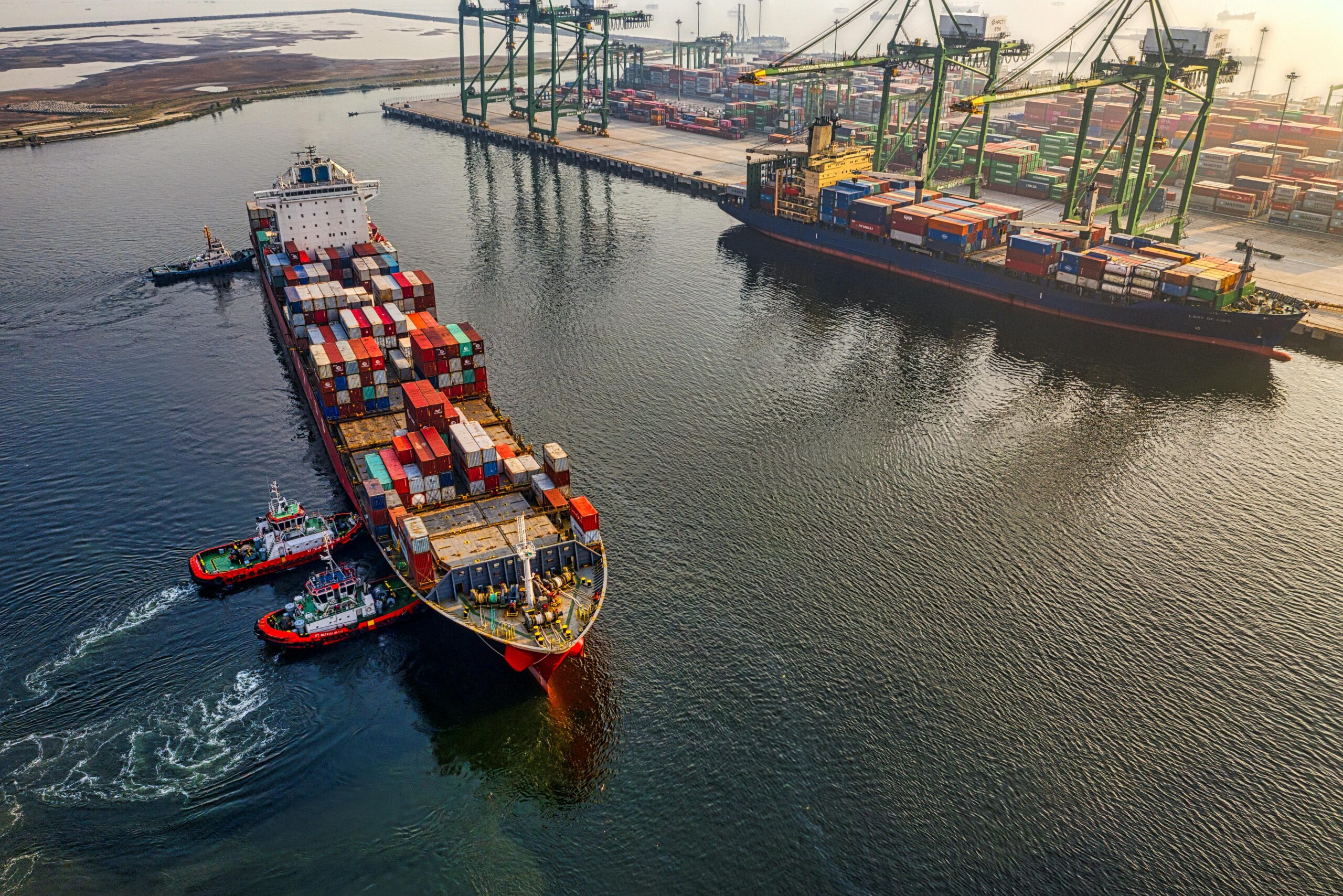

In October 2024, over 47,000 dockworkers across 36 U.S. ports went on strike, paralyzing nearly half of the country’s import traffic. It was the largest port labor action in decades. Ships sat idle. Containers piled up. Deliveries slowed to a crawl. And for thousands of businesses, everything from parts to products got stuck in limbo resulting in disrupted supply chain visibility.
This strike didn’t just cause shipping delays. It exposed something deeper: a lack of visibility.
Many companies couldn’t even tell which of their goods were impacted until it was too late. Orders were missed. Warehouses ran empty. And customers were left wondering where their shipments were.
The bigger issue? These disruptions aren’t rare anymore. Between labor unrest, geopolitical risk, weather events, and shifting regulations, supply chains are under constant stress. What separates the companies that adapt from those that struggle is visibility, the ability to know what’s happening across your operations in real time, and act on it fast.
Let’s get into why this matters so much, how it saves money, and what real businesses are doing to get better visibility across their supply chains.
The Real ROI of Real-Time Visibility Tools
For years, visibility tools were treated as a “nice-to-have”—something for big players with big budgets. But now, the economics are clear. Real-time visibility leads to better decisions, fewer disruptions, and stronger performance across the board.
1. Cutting Down on Delays
Every hour of delay adds cost. Whether it’s due to weather, port congestion, or missed pickups, small disruptions turn into big headaches when no one sees them coming. Visibility tools help you track shipments in real time, so you’re not waiting for someone to send you an update.
McKinsey reported that companies with real-time dashboards for end-to-end visibility were twice as likely to avoid major supply chain issues during disruptions in early 2022. When you can see delays as they happen, you can reroute, reschedule, or inform your team—saving both time and money.
2. Reducing Excess Inventory
Without good visibility, businesses often hold too much inventory just to play it safe. That ties up capital and racks up storage costs. With better tracking, you can order smarter and leaner knowing exactly what’s arriving and when.
Implementing real-time shipment tracking can significantly enhance inventory management. For example, Shein, a Chinese-founded fashion retailer, utilizes real-time data to minimize inventory costs. This approach allows Shein to offer ultra-low prices and release thousands of new styles daily.
3. Saving Labor Hours
Without automated tracking, teams spend countless hours calling freight providers, emailing suppliers, and updating spreadsheets. A visibility tool gives everyone, from warehouse staff to procurement managers, a single source of truth. Less chasing, fewer manual updates, and more time for higher-value tasks.
4. Keeping Customers in the Loop
Customer expectations have changed. Whether you’re in B2B or B2C, people want updates. If something is late, they want to know—not guess.
With a visibility platform, you can send real-time alerts when something is delayed, rerouted, or delivered. That level of transparency goes a long way. It keeps customers informed, reduces complaints, and builds long-term trust.
No surprise then that by 2023, 79% of companies had implemented digital dashboards to improve visibility, according to McKinsey.
5. Holding Partners Accountable
With clear data, you can see which suppliers and carriers are meeting their service levels, and which ones aren’t. That gives you the leverage to renegotiate contracts, reallocate orders, or make changes backed by data instead of gut feel.
Walmart has transformed its supply chain by integrating real-time tracking technologies and leveraging its extensive network of physical stores as delivery hubs. This approach has enabled Walmart to offer same-day delivery for millions of items, including groceries, thereby enhancing customer satisfaction and competitiveness in the e-commerce market.
Visibility Builds Trust Across the Supply Chain
A supply chain isn’t just about moving goods. It’s about coordinating people, suppliers, carriers, warehouse staff, and customers—all working together. But when each party has a different version of “what’s happening,” confusion creeps in.
Take a common example: A supplier sends out a shipment but doesn’t update you. Your warehouse team isn’t ready to receive it. It arrives unexpectedly, storage is scrambled, and other orders get delayed.
Or a customer asks for an ETA, and you give them your best guess. When it turns out to be wrong, they’re frustrated—and less likely to trust you next time.
With visibility, everyone’s on the same page:
- Suppliers know their performance is being tracked
- Your warehouse knows what’s arriving and when
- Customers get real-time updates, not vague answers
How IoT and Data Analytics Drive Visibility
Visibility isn’t magic—it’s data. And two technologies are making it possible at scale: IoT and analytics.
What IoT Brings to the Table
IoT (Internet of Things) refers to devices like GPS trackers, RFID tags, and temperature sensors that collect and transmit data automatically. These tools can be placed on:
- Containers, to show real-time location
- Trucks, to monitor routes and performance
- Shipments, to check conditions like temperature or handling
- Warehouses, to track pallet movement and stock levels
No more waiting for check-in calls or status emails. These devices send updates automatically, giving you a live view of what’s happening on the ground.
Where Analytics Comes In
IoT gives you raw data. Analytics helps you make sense of it.
With the right tools, you can spot trends like:
- Delays by lane, carrier, or time of day
- Suppliers who consistently underperform
- Routes that cause spoilage or damage
And you don’t need to be a giant enterprise to use this tech. According to McKinsey, 77% of companies prioritized investment in visibility tools in 2022 alone. It’s quickly becoming standard practice—not an edge case.
Real Examples of Visibility in Action
Let’s break down a few real-world examples where visibility translated into tangible results:
1. BMW’s Blockchain-Enhanced Supply Chain Transparency
The BMW Group recognized the complexities of managing a vast network of suppliers across multiple countries. To address this, they implemented a blockchain-based system known as PartChain, aiming to enhance transparency and traceability within their supply chain. This initiative allowed BMW to monitor parts and components in real-time, reducing inefficiencies and potential disruptions. The enhanced visibility also facilitated better collaboration with suppliers, leading to improved operational performance.
2. Tanzanian Public Health Supply Chain Improvement
In 2013-2014, Tanzania revamped its public health supply chains by establishing an electronic logistics management information system (eLMIS) and introducing a Logistics Management Unit (LMU). These upgrades led to a reduction in stock-out rates for medical supplies from 32% to 23% and improved overall supply chain performance.
3. Adoption of Real-Time Package Tracking Technologies
Logistics companies are increasingly adopting advanced tracking technologies to enhance supply chain visibility. For instance, FedEx have integrated sensor-based devices that emit signals similar to smartphones, enabling real-time location updates without relying solely on manual barcode scans. These technologies utilize cellular networks, Bluetooth, and RFID to maintain continuous visibility of packages, reducing the chances of misplaced or lost parcels. This advancement is particularly beneficial for tracking high-value goods and improving overall supply chain efficiency.
How Partnering with Contguard Means an Uninterrupted Supply Chain Visibility
Even with the best planning, supply chains face uncertainty every day. What matters is how fast you spot a problem and how quickly you can respond. That’s where Contguard comes in, not as just another tech vendor, but as a visibility partner with a practical, field-tested approach to uninterrupted logistics.
Contguard specializes in providing end-to-end visibility for containerized cargo. Their edge? It’s not just data—it’s precision.
While many solutions show you a delayed shipment after it’s already late, Contguard’s system provides real-time alerts based on location, temperature, movement, and even tampering. Whether your goods are stuck in a yard, exposed to improper conditions, or off-route, you’ll know the moment it happens, not after the damage is done.
Here’s what that means in practice:
- Early detection of delays: You get ahead of potential problems by spotting shipment deviations or port congestion before they turn into costly disruptions.
- Live monitoring of container conditions: Whether you’re shipping electronics, pharmaceuticals, or perishable goods, you’ll know if conditions fall outside the acceptable range.
- Fewer blind spots between nodes: From port to warehouse to final mile, you get full visibility—not just static updates at checkpoints.
By partnering with Contguard, businesses shift from reacting to events to managing them proactively. The result is fewer delays, tighter coordination across the supply chain, and better control over every shipment, especially the high-value or time-sensitive ones.
It’s not about flashy dashboards or buzzwords, it’s about reliable insights, shared in real time, that help you keep your operations moving. For companies looking to make visibility a built-in advantage rather than a last-minute fix, Contguard delivers exactly what’s needed: uninterrupted supply chain intelligence that just works.
It’s Not Just About the Tools—It’s the Mindset
Technology is only part of the answer. The businesses that benefit most from visibility are the ones that change how they operate. They stop relying on assumptions and start using real-time data to make decisions.
Here’s what that looks like:
- Reviewing supply chain data in weekly team meetings
- Training staff to act on alerts and dashboards
- Making transparency part of vendor agreements
- Sharing ETAs and updates proactively with customers
That shift—from reactive to proactive—is where the biggest gains happen.
No surprise then that 67% of logistics companies are actively investing in supply chain management systems, according to SupplyChainBrain. The industry is moving, and fast.
Image Credits: Photo by Tom Fisk: https://www.pexels.com/photo/aerial-shot-of-cargo-ship-on-sea-3840441/


